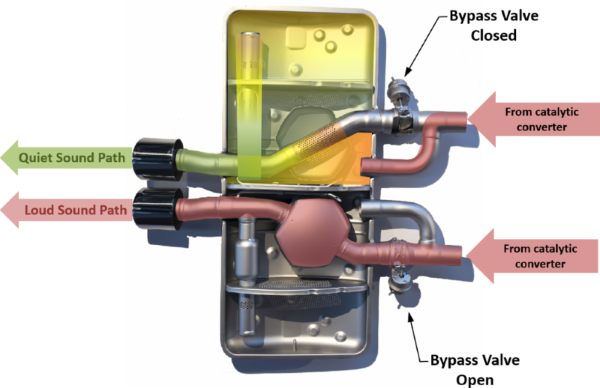Vehicle Specific Supplemental Support Documents
Select the vehicle to view the available vehicle-specific support documents.
Additional Makes and Documents
Maserati Install Tips: See Ferrari 599
Volkswagen Install Tips: See Audi RS4
General Supplemental Support Documents
Refer to the controller's installation instructions document as your first source for installation. The documents listed below are additional tips for specific vehicles.
The supplemental support documents listed here are general in nature and not specific to any one vehicle.
If you have any questions, please contact us.
Bypass Valve Operation
Automotive engineers design exhaust system considering many factors, including the number of cylinders, the power curve they are seeking and environmental considerations. Exhaust system have variable characteristics depending on the flow of exhaust gases which will vary with the engine RPM. These variables present a challenge when designing effective engine exhaust systems. With the use of exhaust bypass valves, engineers can alter the exhaust gas flow rate depending on engine RPM. This helps to optimize the exhaust system to produce the maximum power or torque. Secondarily, the engineers can also achieve compliance with noise abatement requirements.
This illustration of a car’s exhaust silencer shows how exhaust gases are routed through a different path when the bypass valves are in the open and closed position. Some vehicles deploy the bypass valves in the exhaust tips. When the valves are open, the path is less restrictive which improves power at higher engine RPM and also results is less sound attenuation. With the valves closed, there is more restriction to exhaust gas flow which helps improve torque at lower engine RPM and results in greater sound attenuation.
The bypass valve is a simple butterfly valve that is opened or closed by a pneumatic actuator. To control the actuator, the car's ECU either activates or de-activates a vacuum solenoid valve to apply vacuum to close the valve or vent the actuator to atmosphere to open the valve. The signal to open or close is dependent on specific parameters coded into the car's ECU such as engine RPM, throttle position and vehicle speed.
Although the vehicle engineers design the systems to close the bypass valves at lower engine RPM and vehicle speeds, the driver of the car may prefer to have the valves open to make the car louder at lower engineer RPM. In order to accomplish this, the bypass valves can be mechanically fixed in the open position. But, this solution, although simple, does not allow the driver to easily switch between open and closed.
With the Forza Exhaust Controller, the vehicle operator can actuate the vehicle’s exhaust bypass valves at will and select open or closed ... thereby overriding the car’s ECU control. The Forza Controller intercepts the signal from the car's ECU and either passes signal without any change to the vacuum solenoid valve (Normal operation) or switches to one of two circuits inside the controller itself to keep the valves open or forcing them closed at all times. When intercepting the circuit, the controller shunts the original signal to an auxiliary circuit so the car's ECU does not sense a fault. This prevents a trouble code from being generated. With the Forza Controller, the vehicle operator is able to choose the mode, or position, for the bypass valves: Normal, Open, and Closed.




